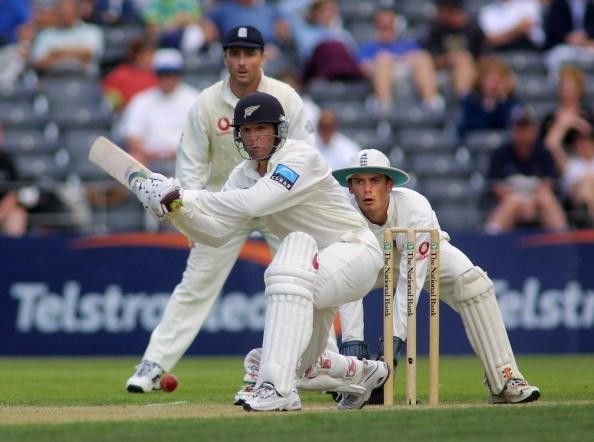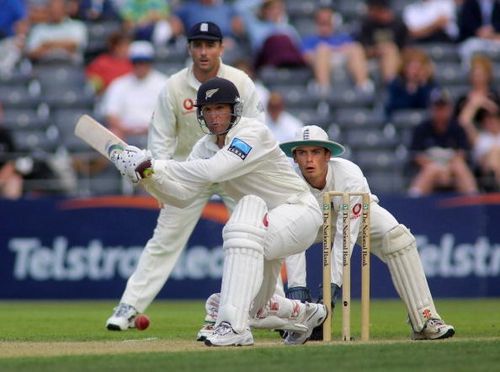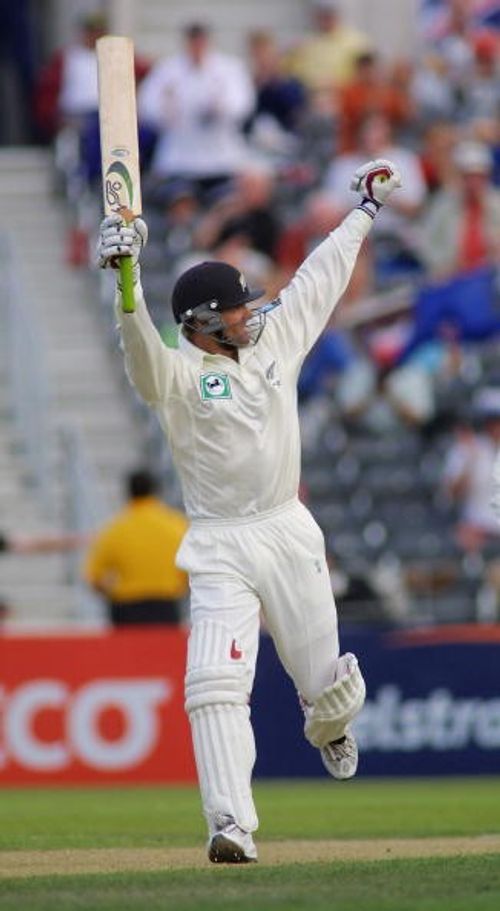
When Nathan Astle almost defied Logic & Odds - A Reminiscence of the fastest 200 in Test cricket

Nathan John Astle, one of New Zealand’s leading batsmen during 1996-2005, turns 44 today. A prolific batsman with over 11,000 International runs (Tests & ODIs combined) and a member of the dibbly-dobbly generation of New Zealand bowlers, he was a key member of Stephen Fleming’s New Zealand side. Astle made his ODI debut in 1995 against the West Indies, and test debut in 1996 against Zimbabwe.
By the time he called it quits in 2007, he had accumulated 4702 runs in Tests and 7090 runs in ODIs, at an average of 37.02 and 34.92 respectively. His medium pace bowling helped him collect 51 wickets in tests, and 99 wickets in ODIs.
As is evident, Astle wasn’t someone who racked up inspiring numbers or conquered the statistical summits. He wasn’t in the legion of cricketers who one would pick to bat for their lives. Astle’s legacy lies in being a brazen entertainer who could tear through the opposition on his day. Around the time Sanath Jayasuriya and Romesh Kaluwitharna changed the dynamics of the game by breaking the opposition in the first 15, Astle was bringing that brand of cricket to New Zealand. He may not be remembered as a great player, but for playing some of the best innings witnessed in a New Zealand shirt.
One such innings was a blitzkrieg that was almost the best ever innings in Test Cricket history. Not just because it was the quickest double ton, in terms of balls faced, but due to the circumstances it was played under. England were on a tour to New Zealand and had their noses well in front on a classic, juicy drop-in green top in Christchurch. A first innings lead of 81, and a Thorpe – Flintoff smashathon of a partnership ensured that New Zealand were to chase a mammoth total of 550 to win the test.
Walking in at 119-3, Astle embarked on an once-in-a-lifetime ride that thrilled the spectators and neutrals to the bits. He began his innings in a relatively sedate fashion, hacking the occasional boundaries, and chugging along at just a bit slower than run-a-ball. He had taken a special liking to Hoggard’s line and pace, as he hacked him through the off-side for boundaries at will. With wickets falling at the other end, Astle motored along to his century in 114 balls.
‘Almost’ the best innings in Test match history
At the fall of the 8th wicket, with just Butler and an injured Cairns left for company, Astle took the adage “Attack is the best form of Defence” a bit too seriously. He introduced the opposition and viewers to an exhibition of astounding stroke-play, which left the English pace attack clueless. The image of Nasser Hussain’s befuddled and resigned face as Astle scythed at the seemingly un-gettable target would live long in cricketing folklore.
Astle brought about his second hundred, from 101 to 200, in a mere matter of 39 balls. To put this in perspective, this was in 2002. A good year before T20 cricket came into existence, five years before the inaugural World T20, and six years before the first IPL. Quite fittingly, the onslaught lasted about 21 overs, as Astle gave the world a prelude on what the future holds for Cricket. Till date, only 6 batsmen in T20 cricket, and 3 in ODI cricket have scored a ton at a faster rate.

When the injured Cairns joined Astle at 333-9, New Zealand were still 217 runs short of victory. As Cairns laboured to a literally painstaking 23 of 29 balls, Astle further baffled the already disconcerted opposition with a display of audacious and unflinching batsmanship. In the next 11 overs, Caddick, Hoggard, Giles, and Flintoff were all flogged into submission, the scars of which might still be haunting their conscience.
As the lead came down to under 100 runs, he was finally dismissed of a wide Hoggard half-volley, which he duly tried to submit over the Point boundary, but could only edge to an elated, relieved James Foster behind the stumps. And hence ended what was “almost” the best innings in Test Match history.
The 20 overs of madness had come to an end, and England won by 98 runs. The scoreboard would suggest that it was a comfortable victory for the Poms, but it was anything but that.
And therein lies the Legacy of Nathan Astle. A charismatic, plucky and courageous willow wielder who scripted quite a few remarkable victories for New Zealand, and played one of the greatest test (T20?) innings, much before it was mainstream. It’s almost fitting that Astle took to sprint racing post his retirement, and has had quite a fledging career in the same.